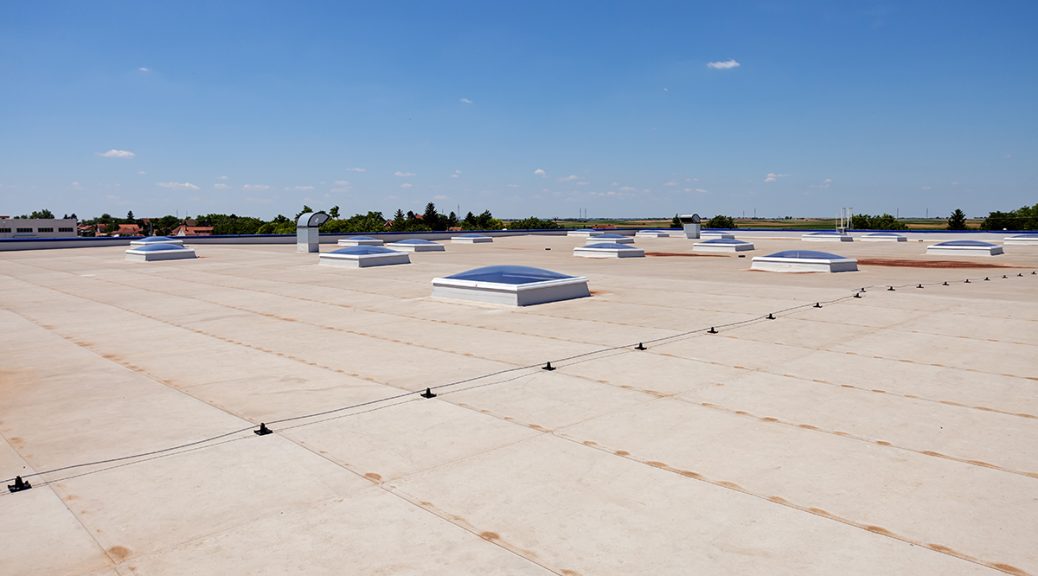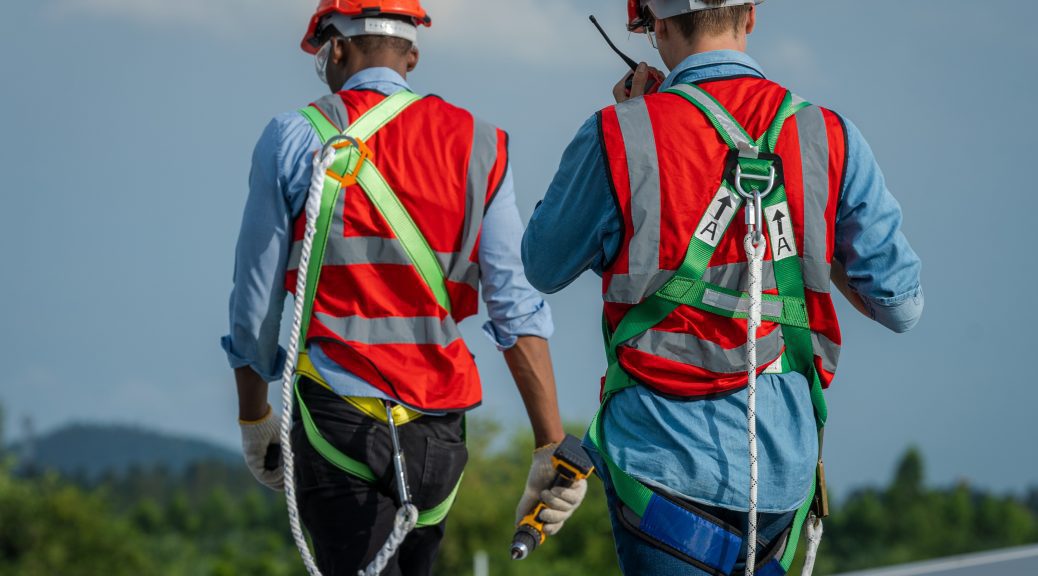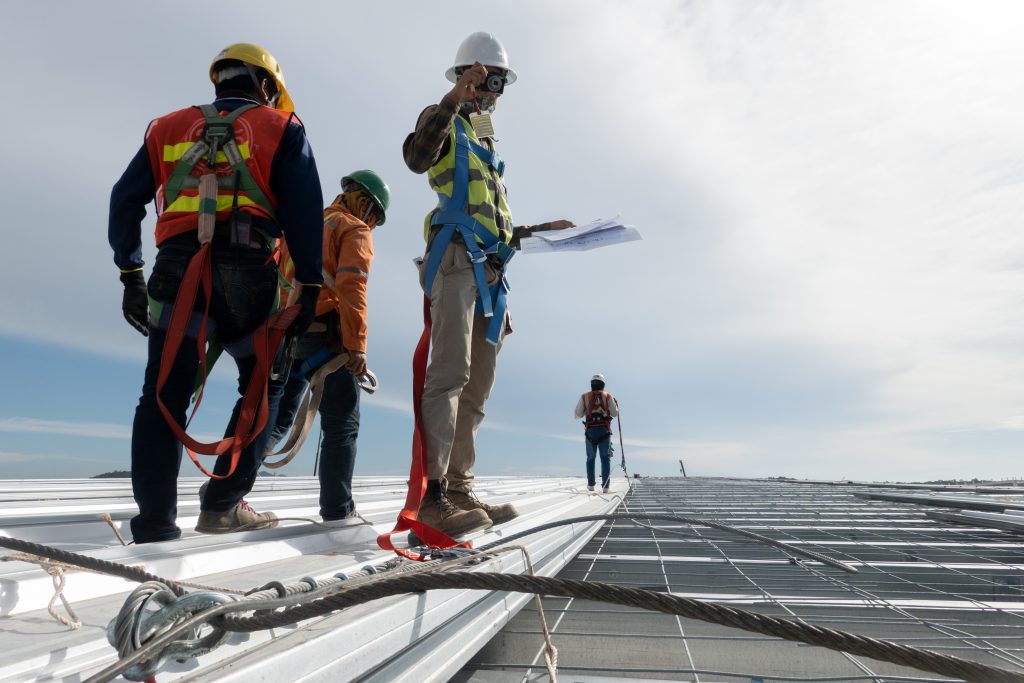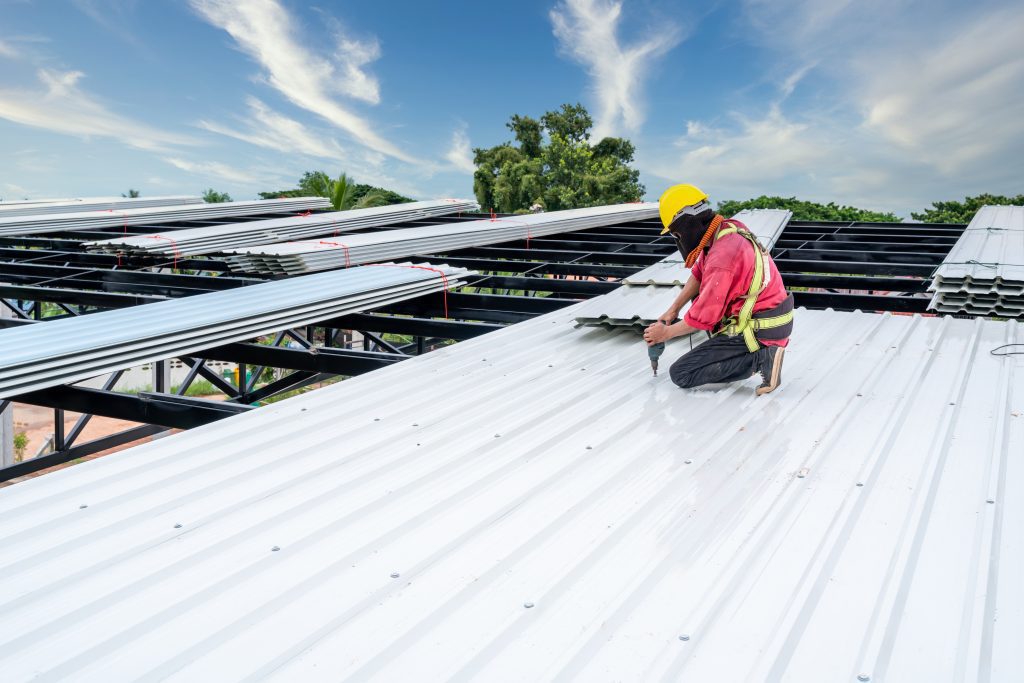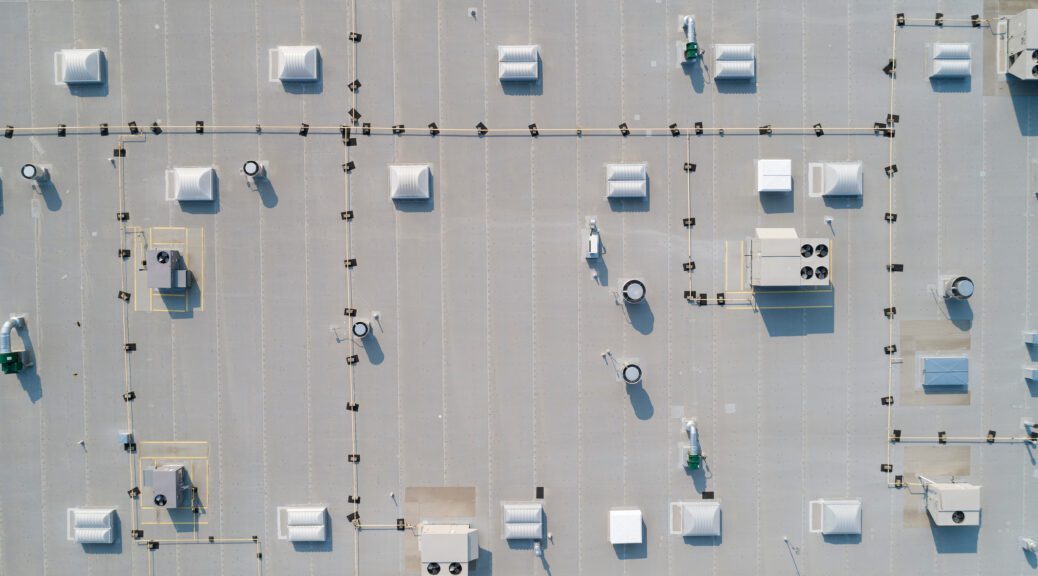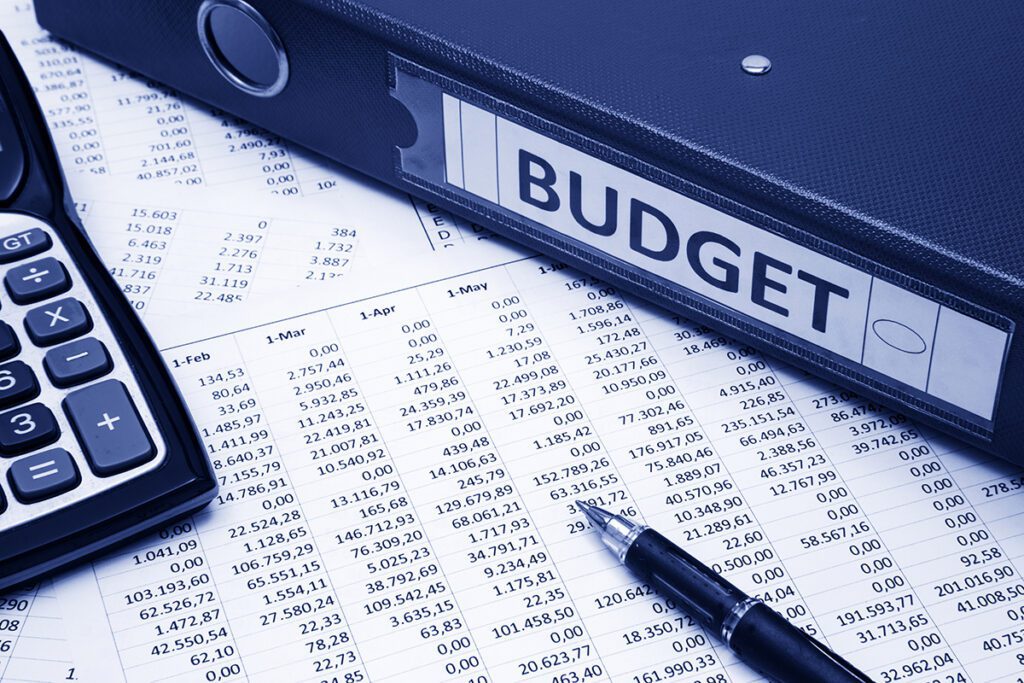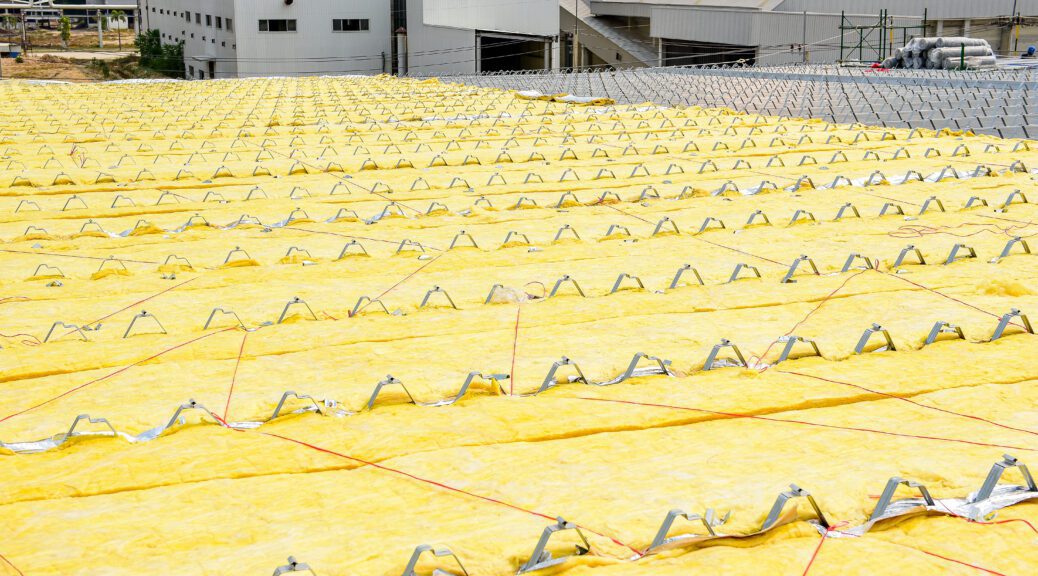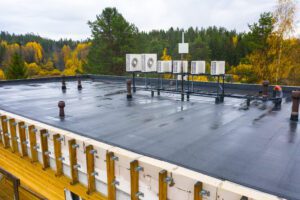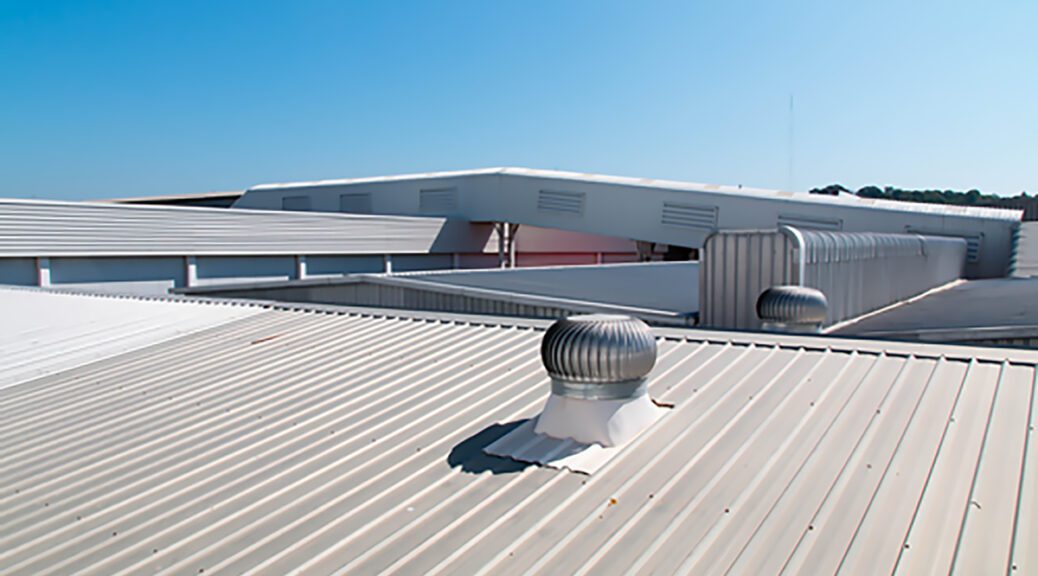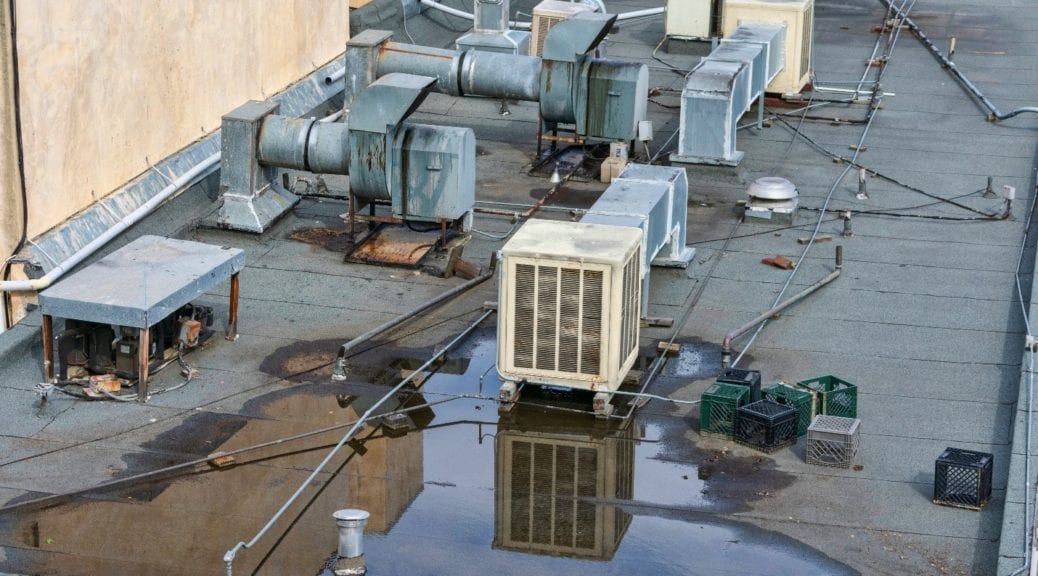How often do you find yourself looking at your office’s roof? Probably not very often. A good roof doesn’t bring attention to itself because it does what it needs to do—protect your business. But this invisible nature is also why problems can seem to pop up out of nowhere. And unexpected problems are expensive ones.
Staying ahead of problems is difficult when you don’t know what to expect. That’s why a commercial roof maintenance program can save your roof from slow-to-appear damages, as well as help you save money. If you want to employ a team who will help you take control of your roof and establish a maintenance plan, call today!
Do I Need a Commercial Roof Maintenance Plan?
If you have a roofing system with a manufacturer’s warranty, you may be required to have a preventive maintenance program in place. It is a frequent requirement of roofing warranties to ensure you have a regular inspection report made.
It’s often recommended that you start a commercial roof maintenance program after having a new commercial roof system installed. This way you can have the installation, inspection, and maintenance all by the same contractor. This consistency helps your contractor keep all essential information organized. But even if your roof is a few years older and hasn’t had a consistent maintenance plan, it’s never too early to start taking care of your roof.
The General Benefits of a Commercial Roof Maintenance Program
So, how exactly does a maintenance program benefit your commercial roof? There are three major ways that a maintenance program and plan will keep you aware, on top of, and ahead of damages.
- Regular inspections will provide you insights into how your roof changes between seasons and over the years. This information will keep you ahead of damage that can slowly build up, and will often get you a less expensive fix before something breaks.
- You will receive insights and recommendations that will provide you with an actionable maintenance plan. This plan is not a one-way discussion, and we want to understand your thoughts and long-term plans for your building.
- Once your maintenance program is built, we can begin the implementation of your scheduled maintenance plan. Every time actions are taken to help your roof in the long run, we will provide you with updates and reports.
How a Roof Maintenance Program Benefits Your Capital Budget
A well-structured capital budget will save you money in the long term by evaluating and planning out large projects and major investments – like construction and renovation projects. A capital budget requires a company to make long-term decisions and predict their biggest expenses. Nobody can predict the future perfectly, but we can help take the guesswork out of at least one part of capital budgeting.
Roof maintenance plans will make capital budgeting easier by taking one of the most common expenses – roof replacement and repair – and putting it on a structured schedule. Roof maintenance programs improve your budgeting options by giving you more information on your roof’s health, a longer time between replacements, and a generally more predictable budgeting schedule.
What You Need for a Commercial Roof Maintenance Program
For the fastest experience possible, your first step should be to gather any and all information you have on your roofing system’s history. Building owners often forget how important documentation can be for repairs and services. The most important information for everyone’s benefit is:
Design and Installation Records
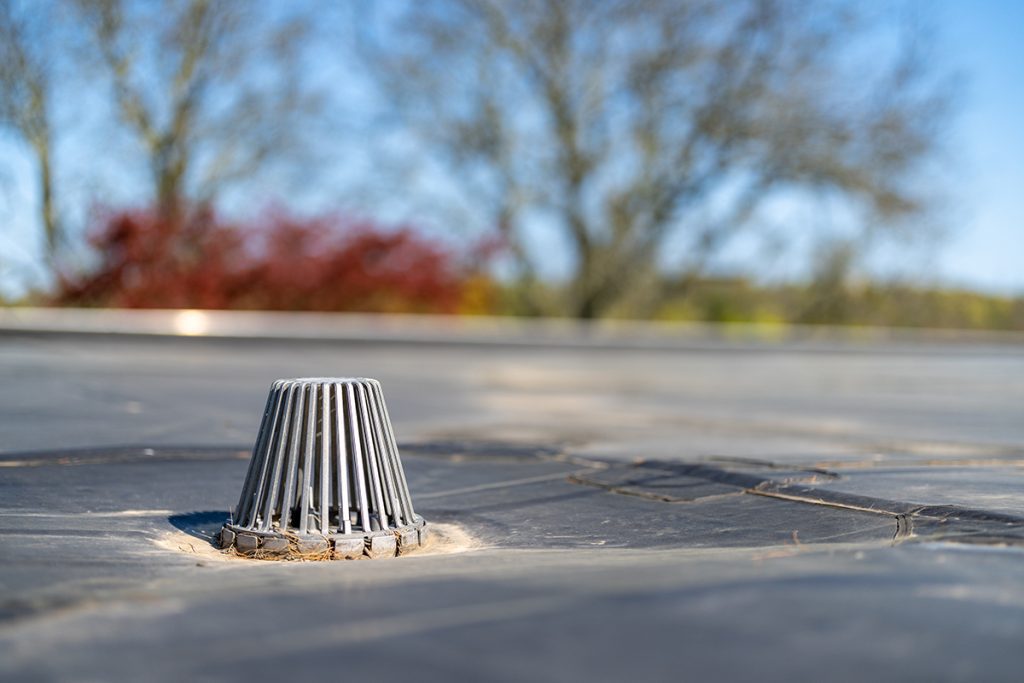
- Blueprints
- Specifications
- Plans
- Suppliers
- Product data
- Field Reports
- Correspondences between those involved in the installation
- Warranties
Inspection and Maintenance Reports
- Chronologic History of Inspections
- Repair photos and reports
- Records of construction or modifications
- Any other service records that occurred on the roof
What Should a Roof Maintenance Program Look Like?
There are two major parts to a commercial roof maintenance plan: the inspections and maintenance. While you might regularly get these done already, having them as a coordinated pair will improve your roof’s life expectancy.
A commercial roof maintenance program will be a more coordinated relationship between you and your roofing company. This relationship will provide you with a commercial roof that is well taken care of, with fewer roof problems, better energy efficiency, and lower costs overall.
What to Expect from the Inspection Program
A maintenance program is usually a regular inspection program that prepares your roofing system for the hardest-hitting points in the local weather cycle. This time will usually be in late fall and early spring before the winter brings ice and spring weather brings storm damage.
Every inspection should be done methodically, according to a procedure like our 21-point commercial roof inspection checklist. Every roofing system is unique and should be tailored to the material and design. Built-up roofing, metal roofing, and single-ply roofing systems will all have their own unique needs to address.
What to Expect from the Maintenance Plan
Regular maintenance and repair are essential for helping to prevent large-scale roofing failures and costly damages. After inspections, your roof will be given any repairs or maintenance that will keep your building safe and sound through the upcoming season.
These regular repairs can also be used as a way to track the lifespan and cost of continuing to repair your roof versus the costs of a replacement. For most of the life of your roofing system, repairs and restorations can be far more cost-effective. But replacement will be needed eventually. Balancing the costs is a major benefit of regular inspection reports.
Begin Your Commercial Roof Maintenance Program from Heidler
When you own a business, you can’t waste your time worrying over roof installation and roof replacement. You want a preventative maintenance system that could save thousands of dollars in the long run. A high-quality commercial roof maintenance plan can improve your roof’s lifespan and keep your roof clean.
If you are worried about leaks showing up, drains getting clogged, or snow building up, call Heidler Roofing today! We will help you begin a preventive maintenance schedule that will extend the life of your roof for years to come!


